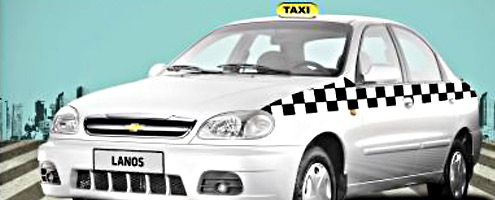 It is now almost a year since Cairenes have found at their service taxis that are modern, clean, and outfitted with metres that determine a fair fare for any given trip. They replaced—or are in the process of phasing out—the old squeaking, dilapidated, life threatening, infamous black-and-white taxis. It was at one point circulated that these black-and-white taxis were, four years ago, among the major factors which contributed to Egypt losing to South Africa the opportunity to host the 2010 Mondiale.
It is now almost a year since Cairenes have found at their service taxis that are modern, clean, and outfitted with metres that determine a fair fare for any given trip. They replaced—or are in the process of phasing out—the old squeaking, dilapidated, life threatening, infamous black-and-white taxis. It was at one point circulated that these black-and-white taxis were, four years ago, among the major factors which contributed to Egypt losing to South Africa the opportunity to host the 2010 Mondiale.
The shiny white taxi
Youseef Sidhom
Opinion
00:07
Sunday ,18 July 2010

The black-and-white taxis were notorious for having metres that either did not work or were not used by the drivers; the drivers preferred to negotiate the fare with passengers. This was, in a way, understandable, since the tariff for the fare had not been adjusted for a near-decade during which prices had spiralled, rendering the fare charged by the metre almost laughable. Frequent problems arose, however, when a driver and passenger would fail to determine a fair deal.
The white taxis first appeared as singular objects on our roads, then gradually spread and gained the confidence of Cairenes who had initially been wary that the fare would be way too hefty for their delicate pockets. In effect, they discovered the fare was reasonably priced—both driver and passengers were fully satisfied—and they realised they had long fallen prey to the greed of black-and-white taxi drivers. Today, a passenger who awaits a taxi may very well let several black-and-white taxis pass by before hailing the first white taxi that comes along.
The new Cairo taxi came within a government-sponsored and subsidised project to ameliorate traffic and environmental conditions on Egyptian roads by replacing the old, dilapidated vehicles with new ones.
So far, so good. I had a recent experience, however, which drew my attention to a detail in the project that was obviously unduly unfair to the operators or drivers of some of the old taxis.
I hailed a taxi which, even though it was a black-and-white one, was a modern vehicle and was obviously very well taken care of. It was shiny clean inside out. I complimented the driver on the condition of his vehicle, only to hear him bitterly complain that the new white taxis were placing him at a severe disadvantage with customers. I replied that no one could complain about his vehicle which was in excellent condition; the only trouble was that it lacked the new metre. If he could have his taxi outfitted with a new metre, I remarked, it would be as good as any of the new taxis. This was when he burst in rage: “Only the new white taxis are allowed to have new metres,” he said. “We’re banned from even applying for one. It’s as though we’re being penalised for some sin we never committed. Why should there be two types of cabs running in Cairo streets, one with the advantage of being modern and having an adequate metre, and the other old and with practically no metre? It’s too obvious which would a customer prefer.”
I felt the man’s argument made perfect sense. Once a vehicle fulfilled the technical and safety specifications for the modern taxi, why should it be deprived of being outfitted with a modern metre? Especially given that the white colour was not an indication of technical and safety fitness, but was a mere indication of belonging to the new generation of taxis. But this in itself obviously categorised the taxis into first and second class cabs no matter the actual condition of the vehicle.
I would also like to draw attention for the need to adjust the tariff and metre periodically—say every two years—lest we drift into the same problem which made the metres of the old taxis practically unusable. After all, the fare must be fair for all: passenger, driver, and operator. If not, our shiny white cabs will surely become another version of the black-and-white ones we are striving so hard to phase out.



